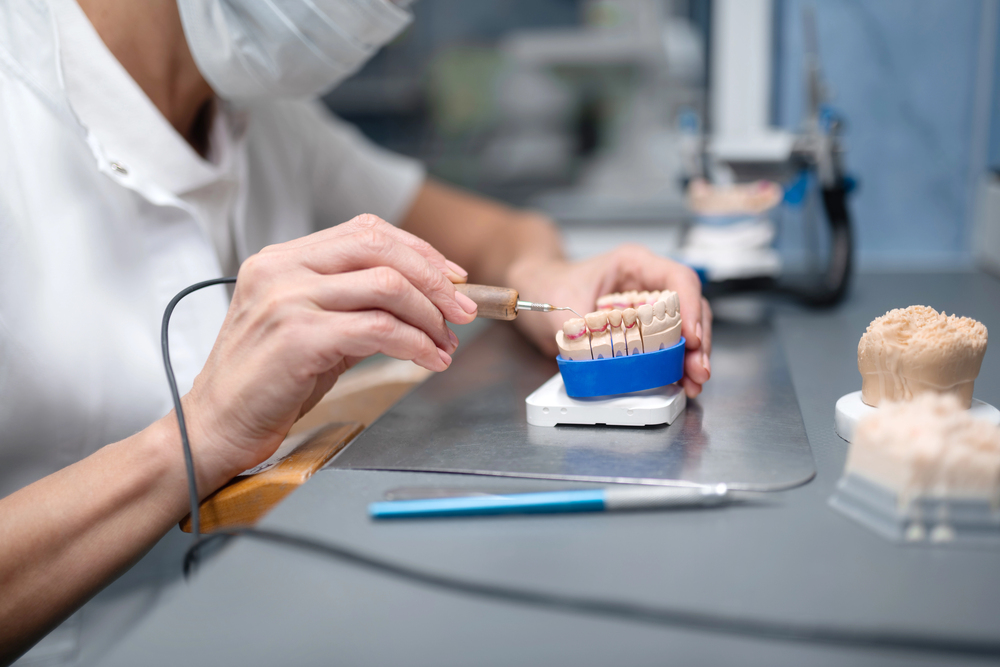The Rise of Natural-Looking Dental Prosthetics
In recent years, dental prosthetics have undergone a remarkable transformation. Gone are the days of bulky, artificial-looking crowns, dentures, and veneers. Today’s prosthetics are designed to blend seamlessly with natural teeth, offering a flawless and realistic appearance. Patients seeking smile rehabilitation are increasingly turning to long lasting porcelain veneers and lifelike prosthetic solutions to restore both aesthetics and function. This shift reflects the growing demand for dental restorations that enhance beauty without sacrificing authenticity.
As the dental industry embraces advanced materials and precision technology, patients benefit from prosthetics that not only look genuine but also withstand the test of time. Furthermore, for dental professionals, creating natural-looking restorations is more than just a cosmetic service—it reflects a commitment to quality care. After all, trust is the cornerstone of any successful business, and providing patients with durable, natural-looking smiles strengthens the reputation and credibility of dental practices.
The Appeal of Natural-Looking Dental Prosthetics
When it comes to dental prosthetics, appearance matters. Patients desire restorations that are virtually indistinguishable from their natural teeth. The latest advancements in materials and fabrication techniques have made this possible, offering several key benefits:
1. Enhanced Aesthetic Appeal
Modern dental prosthetics replicate the translucency, color variation, and texture of natural teeth. Long lasting porcelain veneers, for example, are meticulously crafted to mimic the light-reflecting properties of enamel. The result is a smile that looks authentic rather than overly polished or artificial.
2. Improved Functionality and Comfort
Beyond aesthetics, today’s prosthetics offer superior functionality. Precision-fit crowns, implants, and dentures restore proper bite alignment and chewing efficiency, preventing further oral health issues. Custom-fitted prosthetics also feel more comfortable, reducing irritation and the risk of slippage.
3. Long-Term Durability
High-quality dental prosthetics are designed to last. Materials like zirconia and porcelain are resistant to chipping and staining, ensuring longevity. With proper care, long lasting porcelain veneers can maintain their flawless appearance for 10–15 years or more.
4. Boosted Confidence and Self-Esteem
A natural-looking smile enhances confidence. Patients who previously felt self-conscious about missing, damaged, or discolored teeth experience a significant boost in self-esteem after smile rehabilitation.
Key Technologies Behind Natural-Looking Prosthetics
The shift toward realistic dental restorations is driven by technological innovations and advanced materials. Today’s dentists leverage cutting-edge techniques to deliver natural and precise results.
Digital Smile Design (DSD)
Digital Smile Design (DSD) is a revolutionary technology that allows dentists to create a virtual preview of the patient’s new smile. By digitally mapping the face and teeth, dental professionals can design prosthetics that perfectly match facial features, ensuring a harmonious and natural appearance.
3D Printing and CAD/CAM Technology
Computer-aided design and manufacturing (CAD/CAM) and 3D printing have revolutionized prosthetic fabrication. These technologies enable the creation of highly accurate, custom-fitted crowns, bridges, and veneers with lifelike detail. The precision of these methods ensures consistency in color, shape, and fit.
Porcelain and Zirconia Materials
Both long lasting porcelain veneers and zirconia-based prosthetics offer superior aesthetic and functional properties. Porcelain veneers are popular for their natural translucency, while zirconia provides exceptional durability, making it ideal for dental crowns and implants.
Porcelain Veneers: The Gold Standard for Natural Aesthetics
Among the various types of dental prosthetics, long lasting porcelain veneers are widely regarded as the gold standard for smile enhancement. These ultra-thin, custom-crafted shells are bonded to the front of the teeth, concealing imperfections such as discoloration, chips, and minor misalignment.
Advantages of Porcelain Veneers
– Natural Appearance: Porcelain closely mimics the translucency and texture of natural teeth, making veneers virtually undetectable.
– Durability: With proper care, long lasting porcelain veneers can maintain their flawless look for well over a decade.
– Minimally Invasive: The procedure typically requires minimal enamel removal, preserving much of the natural tooth structure.
Are Veneers Right for You?
Porcelain veneers are ideal for individuals seeking to correct cosmetic flaws without extensive dental surgery. They are particularly effective for:
– Closing small gaps between teeth.
– Covering stains that resist whitening treatments.
– Restoring symmetry to uneven or misshapen teeth.
The Patient Experience: Why Trust Matters
In dental rehabilitation, achieving a natural-looking smile requires more than just technical expertise—it demands trust. Patients entrust their oral health and appearance to their dentists, expecting both skill and integrity. Trust is the cornerstone of any successful business, especially in dentistry, where patient satisfaction is vital for long-term success.
Building Trust Through Quality Care
– Transparent Communication: Dentists who openly discuss treatment options, costs, and expected outcomes build confidence with their patients.
– Consistency in Results: Delivering natural, high-quality prosthetics consistently strengthens patient trust and encourages referrals.
– Post-Treatment Support: Providing thorough aftercare guidance, especially for long lasting porcelain veneers, helps patients maintain their smile’s longevity, reinforcing trust in the practice.
Caring for Natural-Looking Dental Prosthetics
To preserve the beauty and longevity of dental prosthetics, proper oral care is essential. Patients are advised to:
– Practice Good Oral Hygiene: Regular brushing, flossing, and professional cleanings prevent plaque buildup, protecting both natural teeth and prosthetics.
– Avoid Damaging Habits: Biting nails, chewing on hard objects, or using teeth as tools can damage veneers and crowns.
– Wear Night Guards: For patients who grind their teeth, wearing a custom night guard protects both the prosthetics and natural teeth.
– Schedule Regular Checkups: Routine dental visits allow for early detection of any issues and ensure the longevity of the prosthetics.
The New Standard in Smile Rehabilitation
The evolution of natural-looking dental prosthetics has transformed smile rehabilitation, offering patients lifelike results that enhance both appearance and function. With innovations like long lasting porcelain veneers and precision digital technology, today’s prosthetics are virtually indistinguishable from natural teeth. For dental professionals, prioritizing realistic, high-quality restorations not only delivers exceptional patient outcomes but also strengthens credibility and fosters long-term trust.
Ultimately, as the dental industry continues to refine its techniques and materials, the future of smile rehabilitation looks brighter—and more natural—than ever before.

